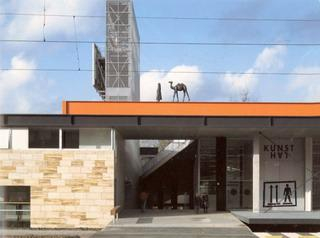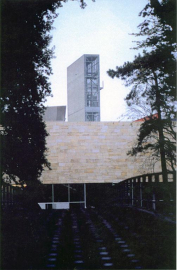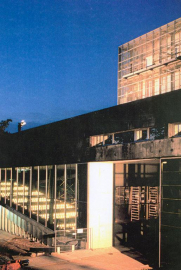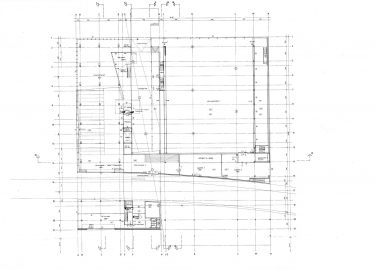Museum of Art
The program demanded three major exhibition spaces to be used jointly or separately, an auditorium, and independently accessible restaurant. The site presents a dual condition: the southern edge is bordered by the Maasboulevard, a highway on top of a dike. The southern side, a level lower, faces the Museum Park conventional contemplation.
The building was conceived as a square crossed by two routes: one, a road running east/west, parallel to the Maasboulevard; the other, a public ramp continuing the north/south, a public ramp continuing the north/south axis if the Museum Park.
With these givens, and the fact that these crossing would divide the square into four parts, the challenge became: how to design a museum in four parts which could function as four autonomous projects a sequence of contradictory experiences which would nevertheless form a continuous spiral. In other words, how to imagine a spiral in for separate squares.
The concept of the building is a continuous circuit. The pedestrian ramp is split, with a glass wall separating the outside, which is open to the public, from the inside, which is part of circuit. A second ramp, running parallel and reversed, is terraced to accommodate an auditorium, and beneath it the restaurant. On the level where the two ramps cress, a 2.5 meter-wide band defines the main entrance. From there the visitors enters a space between a ramp going down to the park and one going up to the dike.
Approaching the first hall, one confronts a stairway and an obstructed view, which is as one descends, is gradually revealed a landscape of tree-columns with a backdrop of greenery framed, and sometimes destroyed by the different types of glass of the park façade.






.jpg)
